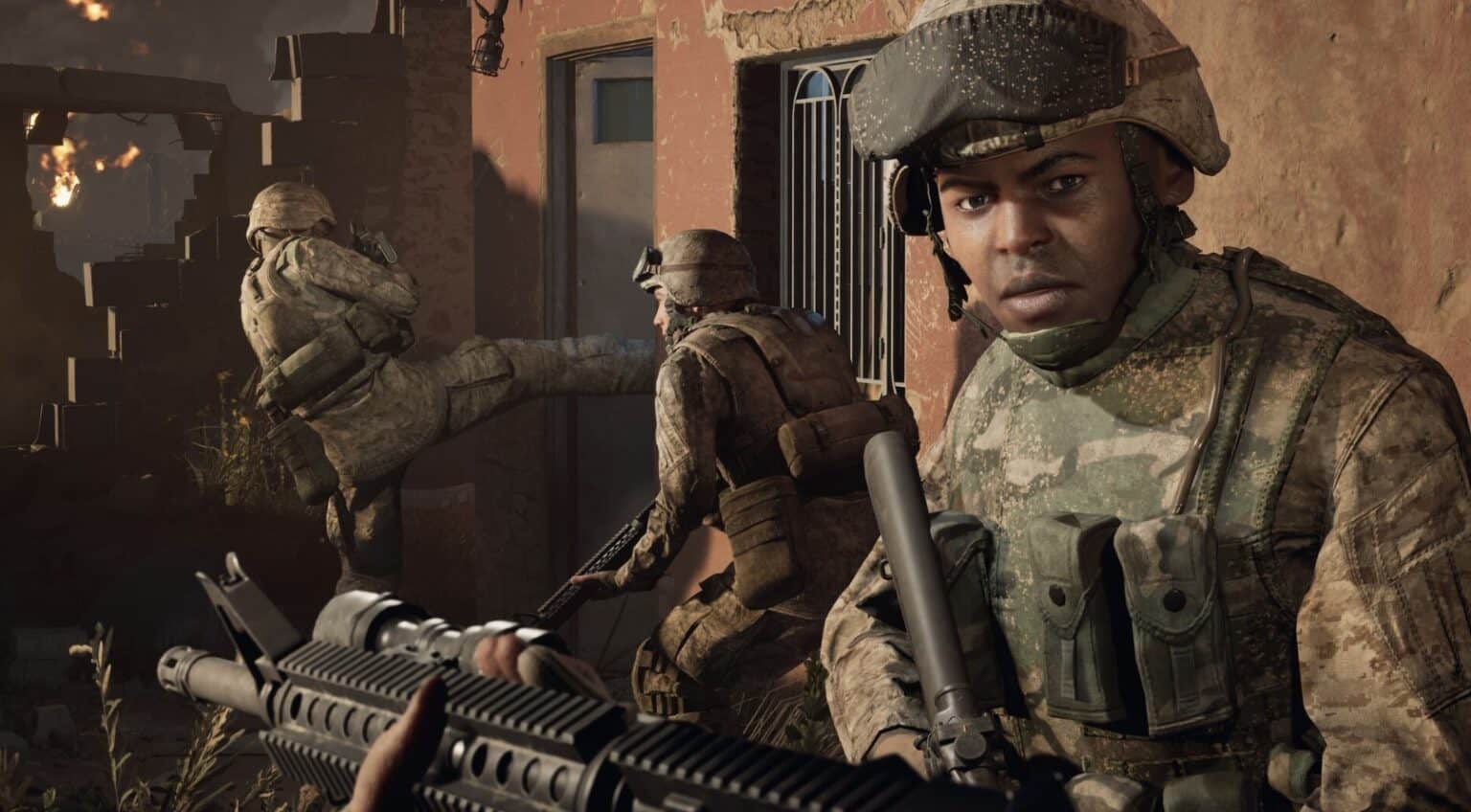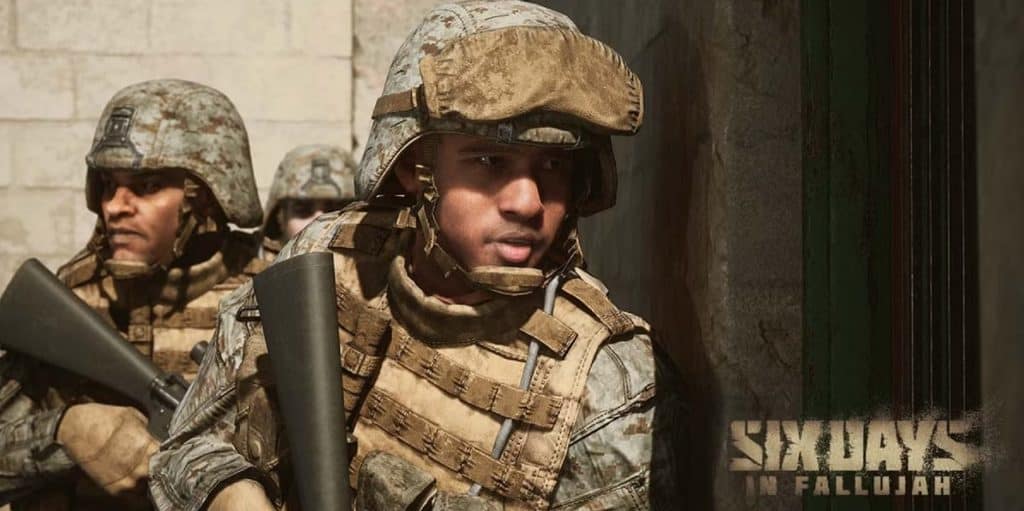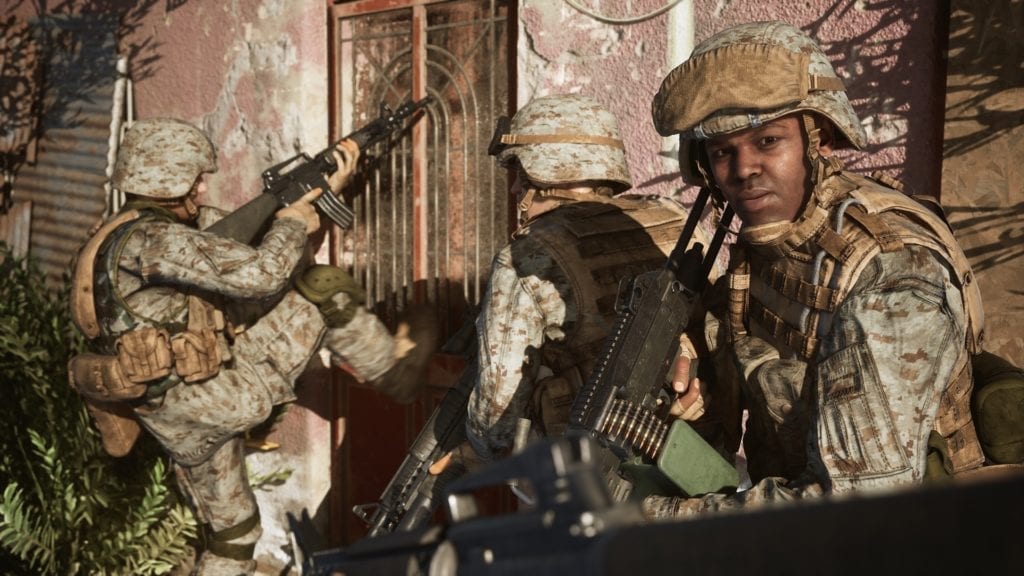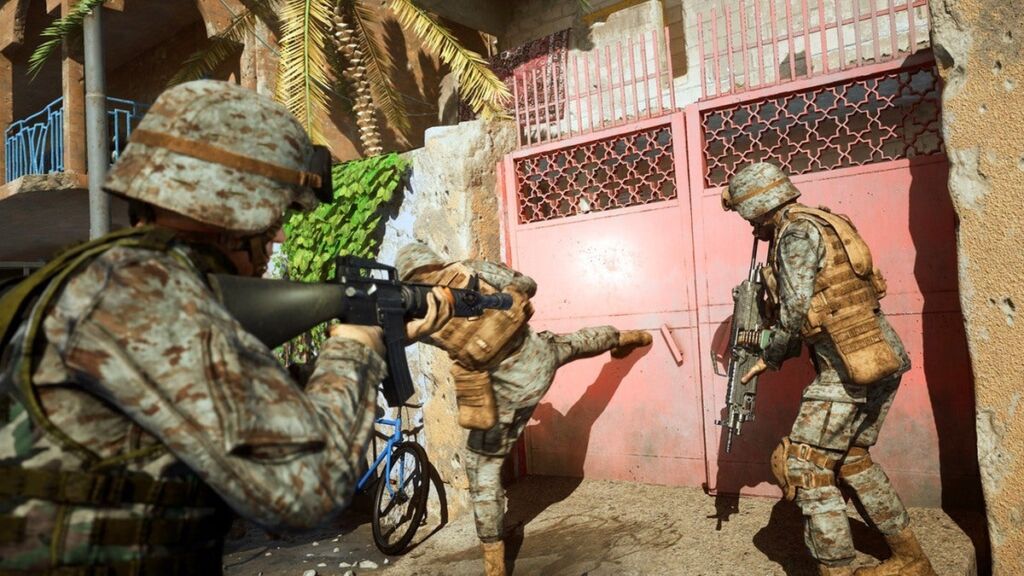Six Days in Fallujah is a game that isn’t really trying to be a game. It’s a simulation to give players an idea of the tragedies and horrors that happened in real life. However that doesn’t really translate to fun as the developers don’t really seem to be up to task of delivering on an intense and adrenaline inducing experience.
I’m no stranger to close-quarters battle games, and I can confidently say this game is attempting to mimic the tension of having to engage potentially hostile targets in small spaces. The problem is that due to a combination of poor AI, frustrating teammates, and awkward controls it never really feels like that.
Due to the Six Days in Fallujah being in early access, I’m going to give it some benefit of the doubt. With the game being available for Steam, you may be interested in giving it a try. Is it worth making the investment? Read our impressions and find out.
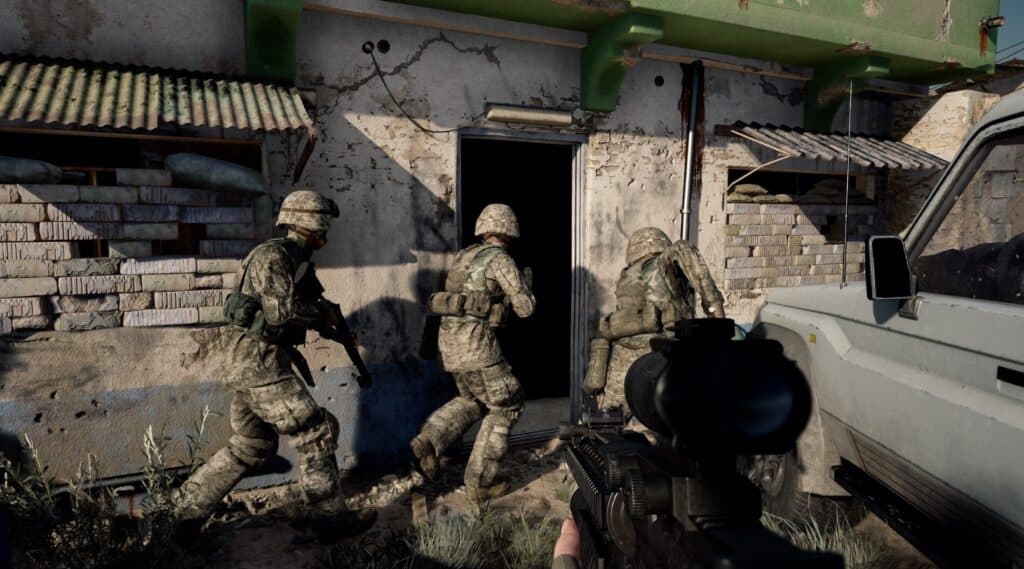
The game starts off right from the get go by presenting itself as more of a documentary. You get to hear from veterans who have actually been in Fallujah recount the horrors of what they experienced. The campaign has you playing through a timeline of these experiences.
Playing through the campaign was a daunting task. This was mostly because of how challenging it is to get your AI teammates to do what you need them to. Most of the controls are mapped to the C button on your keyboard and it’s easy to accidentally issue the wrong order.
Your AI teammates themselves are a roll of a dice. They’re hyper competent in clearing rooms by themselves but they’re unpredictable. One time my AI teammates wouldn’t revive me even though I right next to them and with no hostile contact around. Commanding them is also rather basic, so there’s no telling one person to keep watch on a particular window while the rest of your squad breaches the compound.
This could’ve been better if Six Days in Fallujah adopted a more Ready or Not style of command. The ability to queue up orders to different parts of my squad and then executing them when the setup is complete opens the doorway to an abundance of useful strategy. Mapping it to the C button also leaves room for a lot of mistakes.
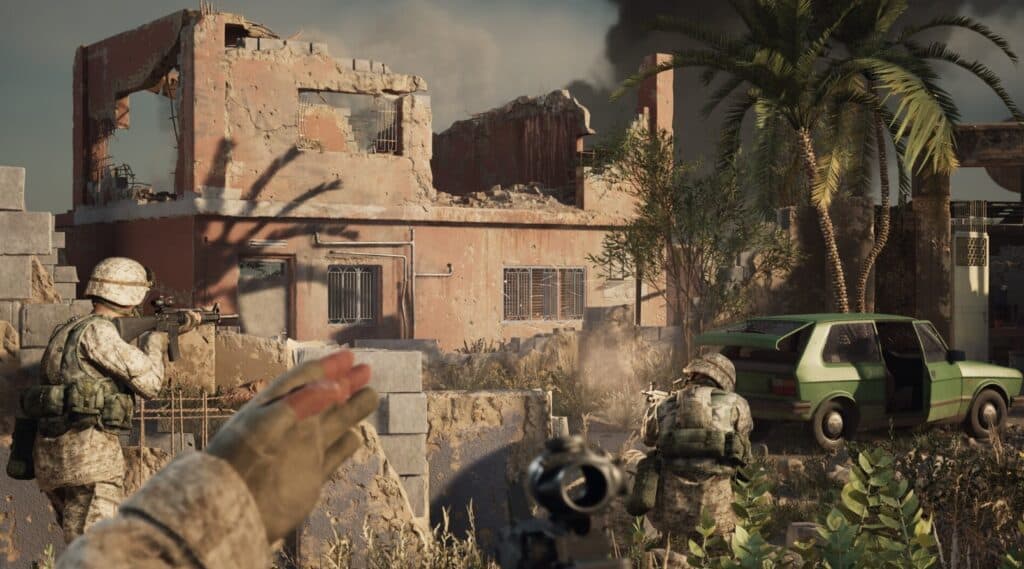
One of the problems I feel exist is that you don’t really feel like a part of your fireteam. You don’t work together with your AI teammates so much as you order them to do their own thing. They don’t seem to register where you’re aiming so they may walk into your line-of-fire and you don’t form up with them when preparing to breach a building.
That isn’t to say the gameplay doesn’t have its moments. There were several cases of recklessness and surprise that caught me off guard. If you’re not careful, you can go from a full team of marines to just myself in less than ten seconds.
Though I would chalk this up more to poor AI. Your fireteam can be unpredictably competent or incompetent at the worst of times. They don’t seem to register where you’re aiming your gun and will occasionally walk between you and your target before dying to friendly fire. Thankfully your squadmates during the campaign can be restocked if you still have a surviving member by going back to the APC.
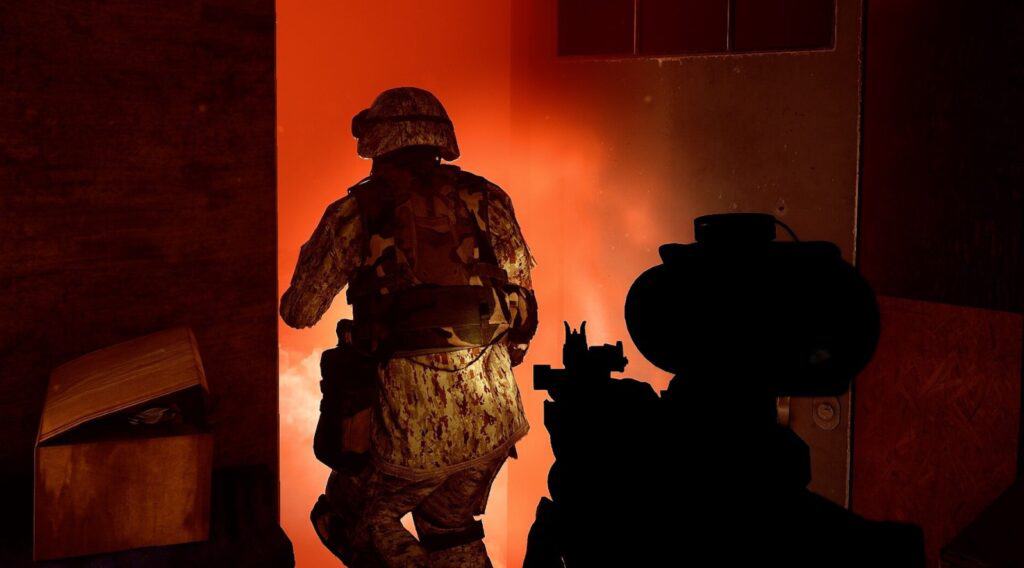
While I’ve talked about the AI teammates, I have to point out how unimpressive the enemies in the game actually are. They aren’t very deadly even though they can kill you in such a short amount of time. This is because they don’t seem to use any tactics with some outright just standing there for a good few seconds staring at blank space before even firing at you.
If you do die, you’ll take control of your remaining squad. There is no option to pick which one you want to control. And this isn’t really a good thing because your squad comes in pre-equipped. You can’t equip them or yourself with the weapons you want to use but the weapon in your hands will change once you’re dead and switch to another member of your squad.
Gunplay in the game isn’t like your typical first-person shooter. Since it’s trying to simulate actual combat. You have to press right click to hip fire and wheel the mouse button up to aim down the sights. If you left click without doing any of these, you’ll still fire but it’ll be wildly inaccurate.
Most gunfights take place in tight spaces and small rooms. Despite the focus on CQB, I never felt the intensity of having to clear the room in the same way I would in games like SWAT 4. There just wasn’t that much need for strategical thinking when I could easily go into a room and mow down enemies.
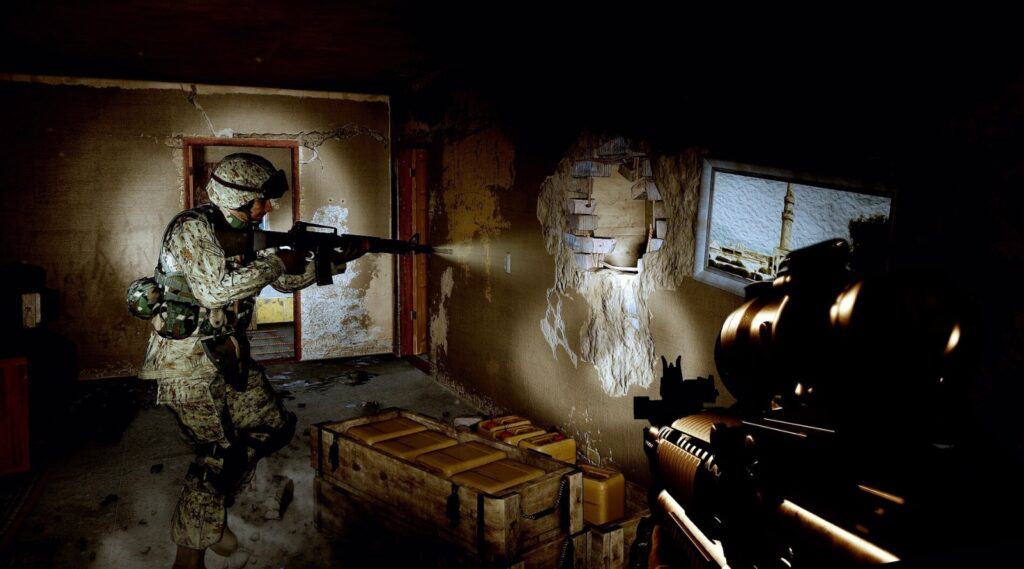
I couldn’t really try out multiplayer during the Six Days in Fallujah. This is most likely due to the region I’m in not really having that many players. We were only given one code, and if we were given extra to try out its multiplayer, the experience could have been wildy different. If you’re going to purchase the game, I’d recommend having friends to already play it with or you’d better be in a region with a lot of players.
It’s clear that Six Days in Fallujah was made with multiplayer in mind. The single player campaign has a lot of flaws, mainly due to having to play with frustrating AI teammates. Highwire Games needs to work on a lot of tweaks to the AI in order to make the game worth playing.



